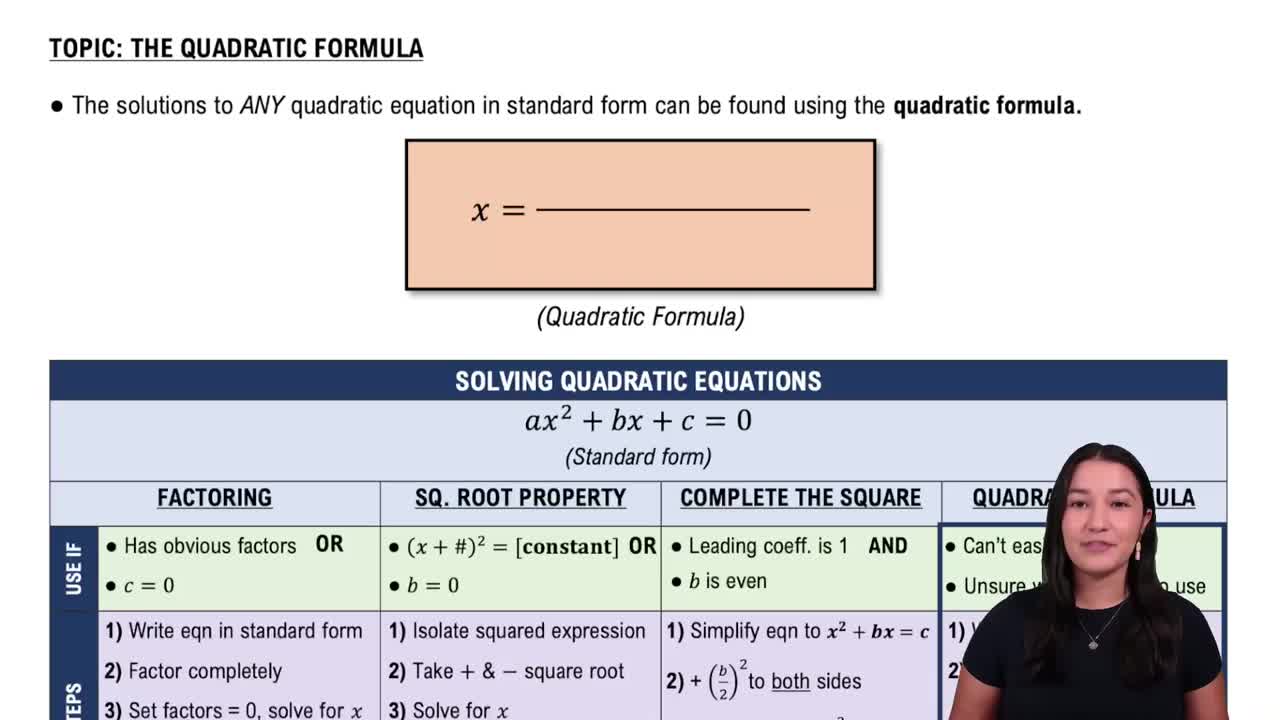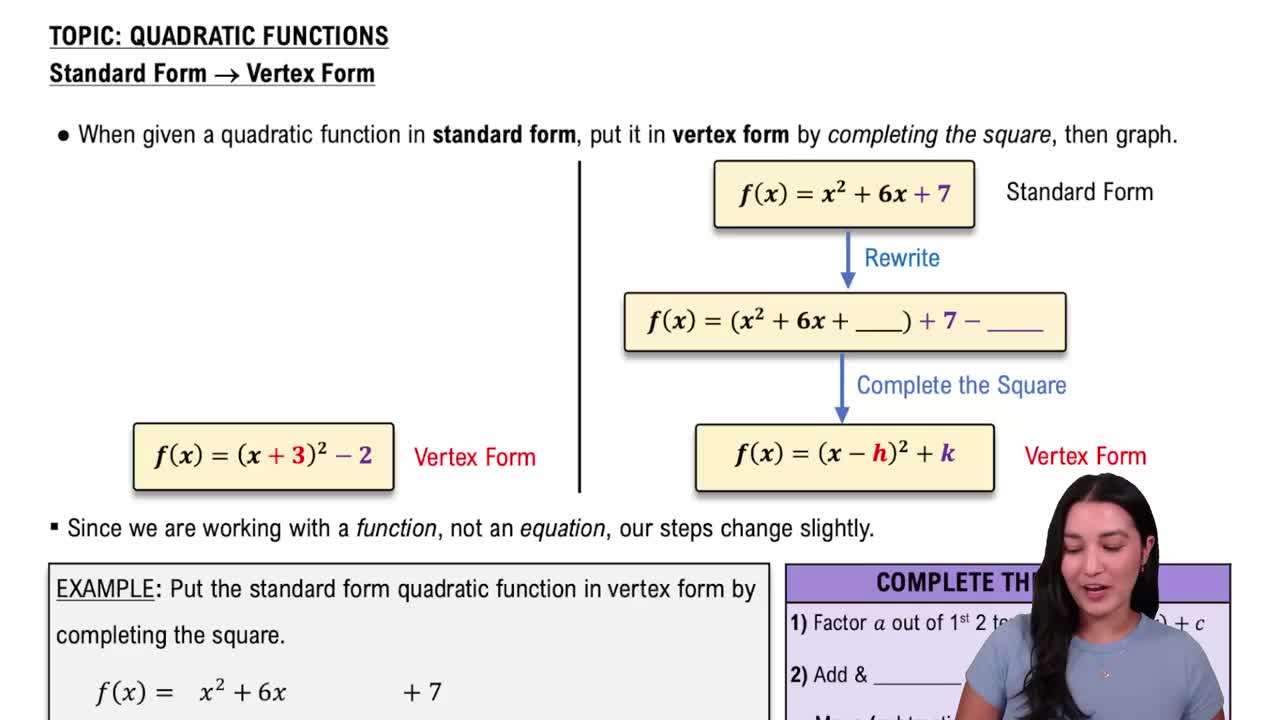Table of contents
- 0. Review of Algebra4h 16m
- 1. Equations & Inequalities3h 18m
- 2. Graphs of Equations43m
- 3. Functions2h 17m
- 4. Polynomial Functions1h 44m
- 5. Rational Functions1h 23m
- 6. Exponential & Logarithmic Functions2h 28m
- 7. Systems of Equations & Matrices4h 6m
- 8. Conic Sections2h 23m
- 9. Sequences, Series, & Induction1h 19m
- 10. Combinatorics & Probability1h 45m
4. Polynomial Functions
Quadratic Functions
Problem 34
Textbook Question
Textbook QuestionGraph each quadratic function. Give the (a) vertex, (b) axis, (c) domain, and (d) range. See Examples 1–4. ƒ(x) = -3x^2 + 24x - 46
 Verified Solution
Verified SolutionThis video solution was recommended by our tutors as helpful for the problem above
Video duration:
5mPlay a video:
Was this helpful?
Key Concepts
Here are the essential concepts you must grasp in order to answer the question correctly.
Quadratic Functions
A quadratic function is a polynomial function of degree two, typically expressed in the form f(x) = ax^2 + bx + c, where a, b, and c are constants. The graph of a quadratic function is a parabola, which can open upwards or downwards depending on the sign of the coefficient 'a'. Understanding the general shape and properties of parabolas is essential for analyzing their characteristics.
Recommended video:

Solving Quadratic Equations Using The Quadratic Formula
Vertex of a Parabola
The vertex of a parabola is the highest or lowest point on its graph, depending on whether it opens downwards or upwards. For a quadratic function in standard form, the vertex can be found using the formula x = -b/(2a) to determine the x-coordinate, and then substituting this value back into the function to find the corresponding y-coordinate. The vertex is crucial for identifying the maximum or minimum value of the function.
Recommended video:

Horizontal Parabolas
Domain and Range
The domain of a function refers to all possible input values (x-values) that the function can accept, while the range refers to all possible output values (y-values) that the function can produce. For quadratic functions, the domain is typically all real numbers, but the range is determined by the vertex; if the parabola opens upwards, the range starts from the vertex's y-coordinate to positive infinity, and if it opens downwards, it extends from negative infinity to the vertex's y-coordinate.
Recommended video:

Domain & Range of Transformed Functions

 7:42m
7:42mWatch next
Master Properties of Parabolas with a bite sized video explanation from Callie
Start learningRelated Videos
Related Practice













